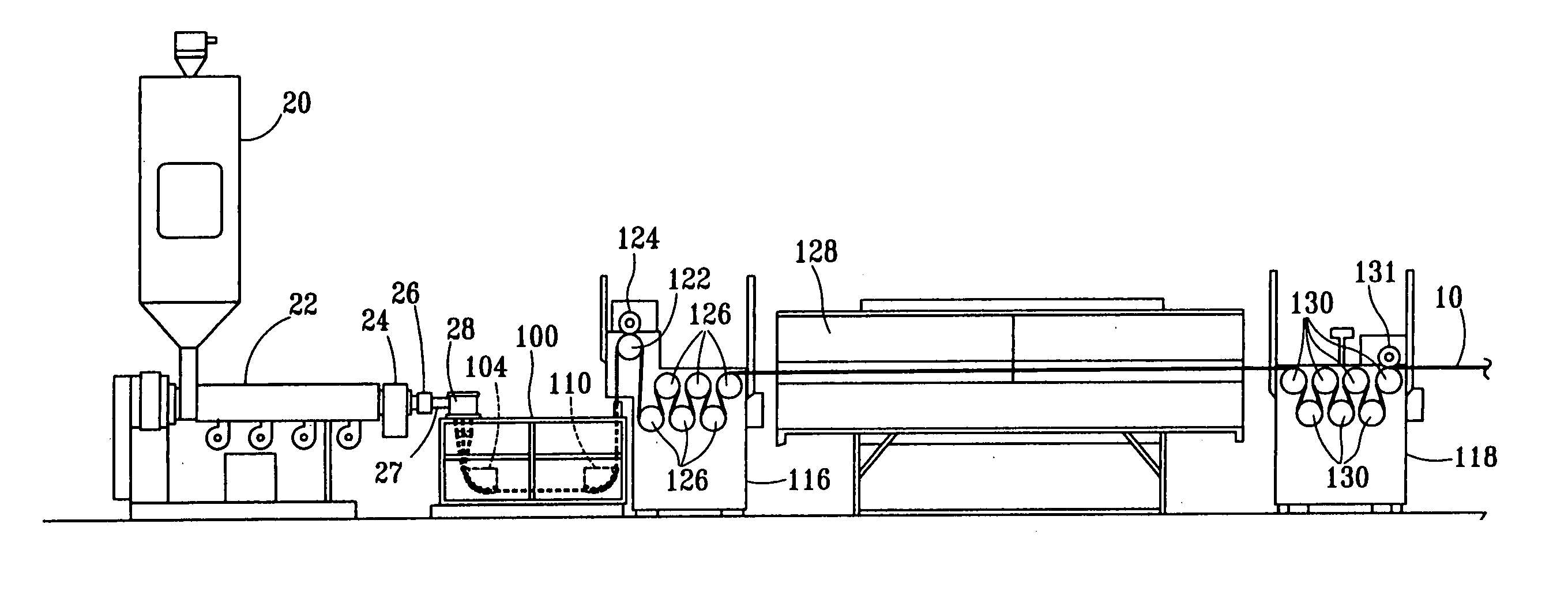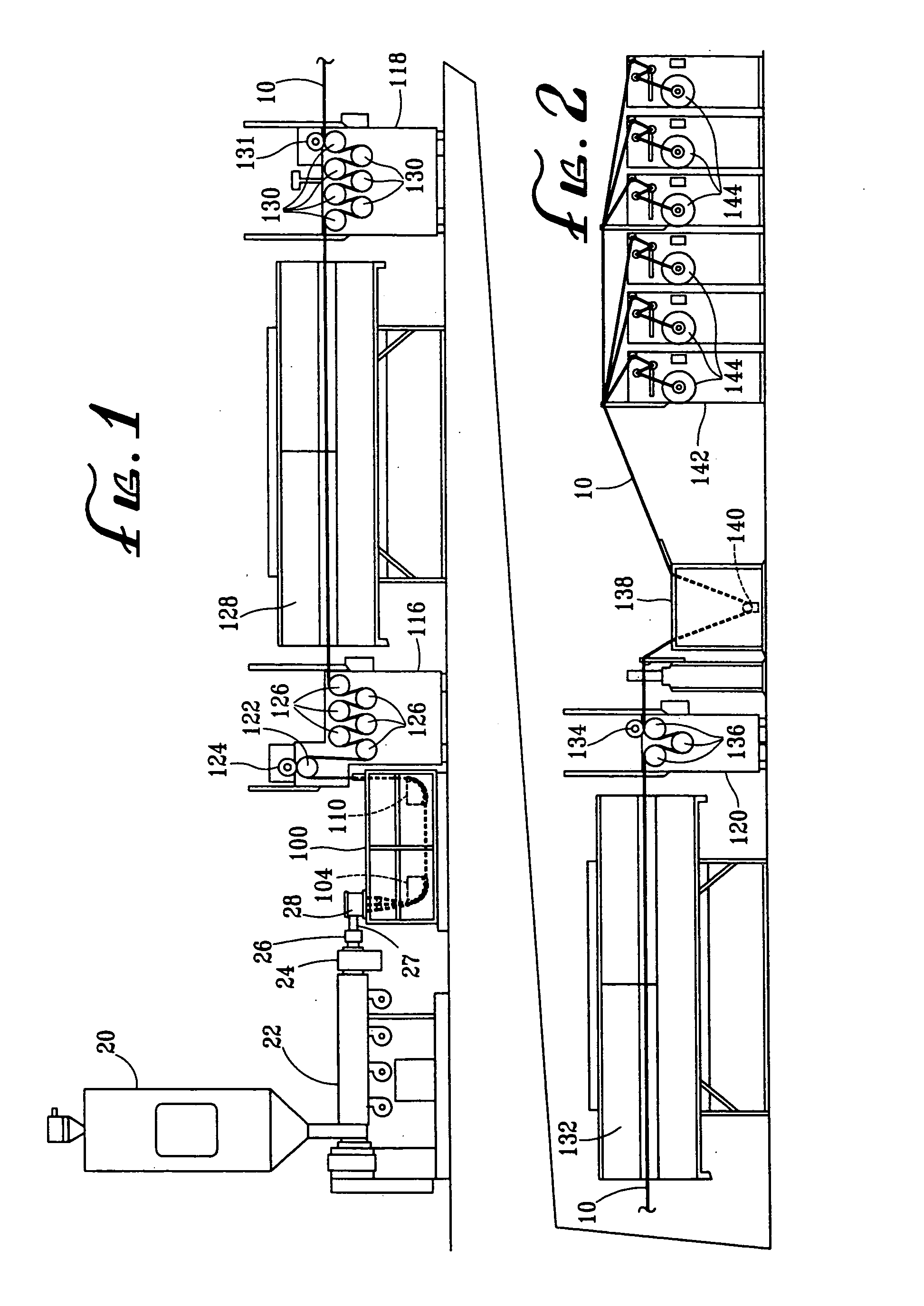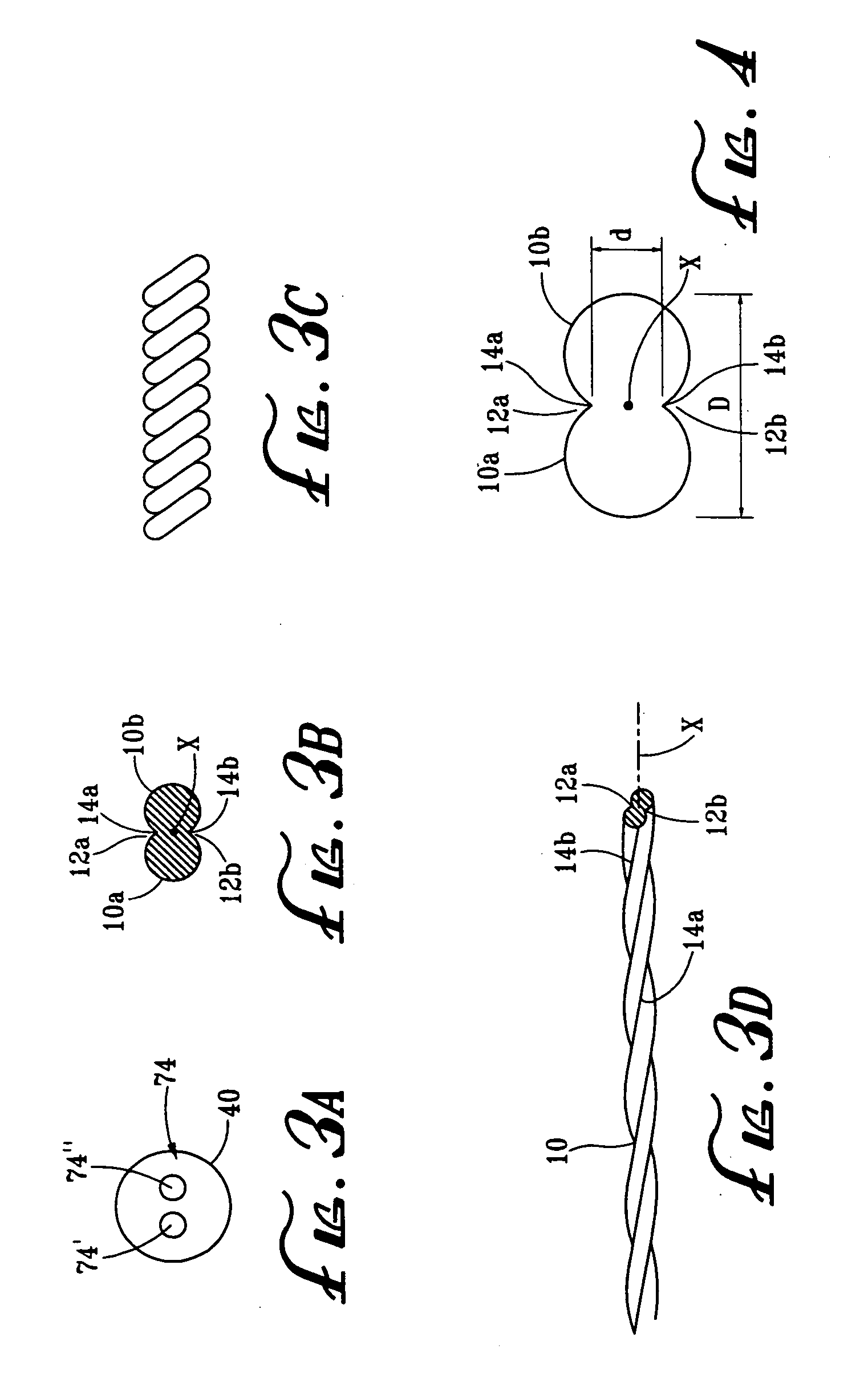Method of manufacturing noise attenuating flexible cutting line for use in rotary vegetation trimmers
a cutting line and flexible technology, applied in the direction of spinnerette packs, transportation and packaging, melt spinning methods, etc., can solve the problems of increasing the need for a noise attenuating cutting line, increasing the noise attenuation characteristics of such lines, and generating considerable noise on projecting nylon lines, so as to enhance the noise attenuation of the line
- Summary
- Abstract
- Description
- Claims
- Application Information
AI Technical Summary
Benefits of technology
Problems solved by technology
Method used
Image
Examples
Embodiment Construction
[0046] Referring now in detail to the drawings, the process of the present invention is schematically represented in FIGS. 1 and 2. The result of the process is a noise attenuating monofilament cutting line 10 comprised of two or more monofilament strands continuously bonded together in a twisted configuration. In a preferred embodiment of the cutting line 10 illustrated in FIGS. 3A and 3B, two strands 10a and 10b having cylindrical cross-sections are bonded together in a twisted disposition about a central axis X so as to form a pair of overlapping cylindrical line portions twisted together to define a single length of cutting line 10. Line 10 defines a pair of inwardly directed and generally V-shaped troughs 12a and 12b terminating in fused seams 14a and 14b that extend continuously in helical dispositions about and along the length of the line. It is to be understood that the cutting line of the present invention could be formed with the same process so as to be comprised of more...
PUM
| Property | Measurement | Unit |
|---|---|---|
| water temperature | aaaaa | aaaaa |
| water temperature | aaaaa | aaaaa |
| water temperature | aaaaa | aaaaa |
Abstract
Description
Claims
Application Information
 Login to View More
Login to View More - R&D
- Intellectual Property
- Life Sciences
- Materials
- Tech Scout
- Unparalleled Data Quality
- Higher Quality Content
- 60% Fewer Hallucinations
Browse by: Latest US Patents, China's latest patents, Technical Efficacy Thesaurus, Application Domain, Technology Topic, Popular Technical Reports.
© 2025 PatSnap. All rights reserved.Legal|Privacy policy|Modern Slavery Act Transparency Statement|Sitemap|About US| Contact US: help@patsnap.com



